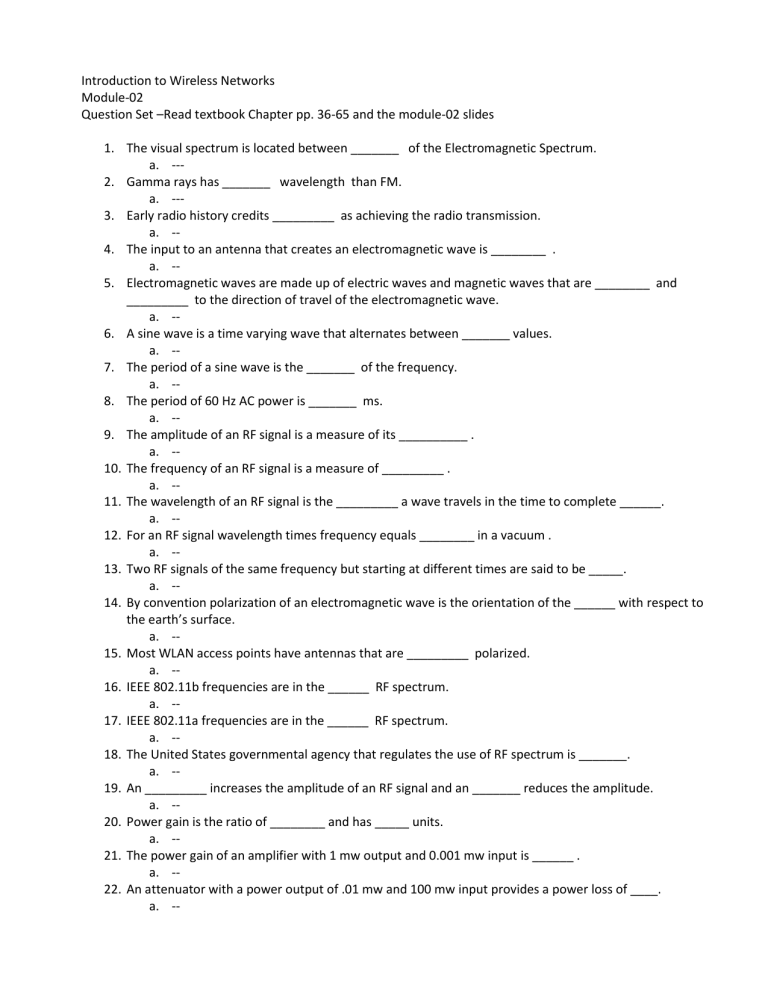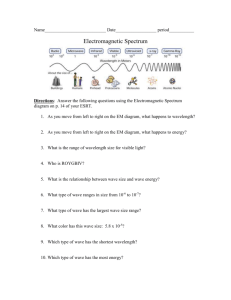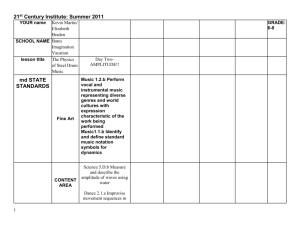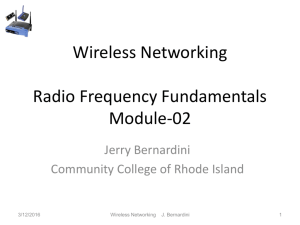Question Set-02

Introduction to Wireless Networks
Module-02
Question Set –Read textbook Chapter pp. 36-65 and the module-02 slides
1.
The visual spectrum is located between _______ of the Electromagnetic Spectrum. a.
---
2.
Gamma rays has _______ wavelength than FM. a.
---
3.
Early radio history credits _________ as achieving the radio transmission. a.
--
4.
The input to an antenna that creates an electromagnetic wave is ________ . a.
--
5.
Electromagnetic waves are made up of electric waves and magnetic waves that are ________ and
_________ to the direction of travel of the electromagnetic wave. a.
--
6.
A sine wave is a time varying wave that alternates between _______ values. a.
--
7.
The period of a sine wave is the _______ of the frequency. a.
--
8.
The period of 60 Hz AC power is _______ ms. a.
--
9.
The amplitude of an RF signal is a measure of its __________ . a.
--
10.
The frequency of an RF signal is a measure of _________ . a.
--
11.
The wavelength of an RF signal is the _________ a wave travels in the time to complete ______. a.
--
12.
For an RF signal wavelength times frequency equals ________ in a vacuum . a.
--
13.
Two RF signals of the same frequency but starting at different times are said to be _____. a.
--
14.
By convention polarization of an electromagnetic wave is the orientation of the ______ with respect to the earth’s surface. a.
--
15.
Most WLAN access points have antennas that are _________ polarized. a.
--
16.
IEEE 802.11b frequencies are in the ______ RF spectrum. a.
--
17.
IEEE 802.11a frequencies are in the ______ RF spectrum. a.
--
18.
The United States governmental agency that regulates the use of RF spectrum is _______. a.
--
19.
An _________ increases the amplitude of an RF signal and an _______ reduces the amplitude. a.
--
20.
Power gain is the ratio of ________ and has _____ units. a.
--
21.
The power gain of an amplifier with 1 mw output and 0.001 mw input is ______ . a.
--
22.
An attenuator with a power output of .01 mw and 100 mw input provides a power loss of ____. a.
--
23.
Power is defined as ______ per unit time and measured in ______. a.
--
24.
Power dissipated by 10 amperes flowing between a 120 volt differential is ______. a.
--
25.
Mechanical power of ______ horse power equal to ______. a.
--
26.
Effective Isotropic Radiated Power (EIRP) is the power _________. a.
--
27.
When an access point (AP) is connected to an antenna via cable the power at the antenna end of the cable will be ______ than the AP side. a.
--
28.
The Intentional radiated power is the power _______. a.
--
29.
The Voltage Standing Wave Ratio (VSWR) is a measure of _______. a.
--
30.
Maximum power transfer is obtained in an RF system with a VSWR of _____. a.
--
31.
If the VSWR is not equal to ____ RF energy will be______ back to the source(AP). a.
--
32.
The impedance of RF components is measured in ______ and be the _____ value for optimum operation. a.
--
33.
RF signals that bounce off a surface without a power loss are ______ . a.
--
34.
EM waves that depart from a straight line when traveling from one medium to another are ______. a.
--
35.
Snell’s Law relates the angle of incidence to the angle of a _____ EM wave and is referred to as the
______ index. a.
--
36.
The approximate refraction index for water is 1.33, 1.5 for glass and _____ for a vacuum. a.
--
37.
When RF signals are diffracted the signal will _________ direction and _________ in amplitude. a.
--
38.
Absorption of EM waves __________ the amplitude of wave produces other forms of _______. a.
--











